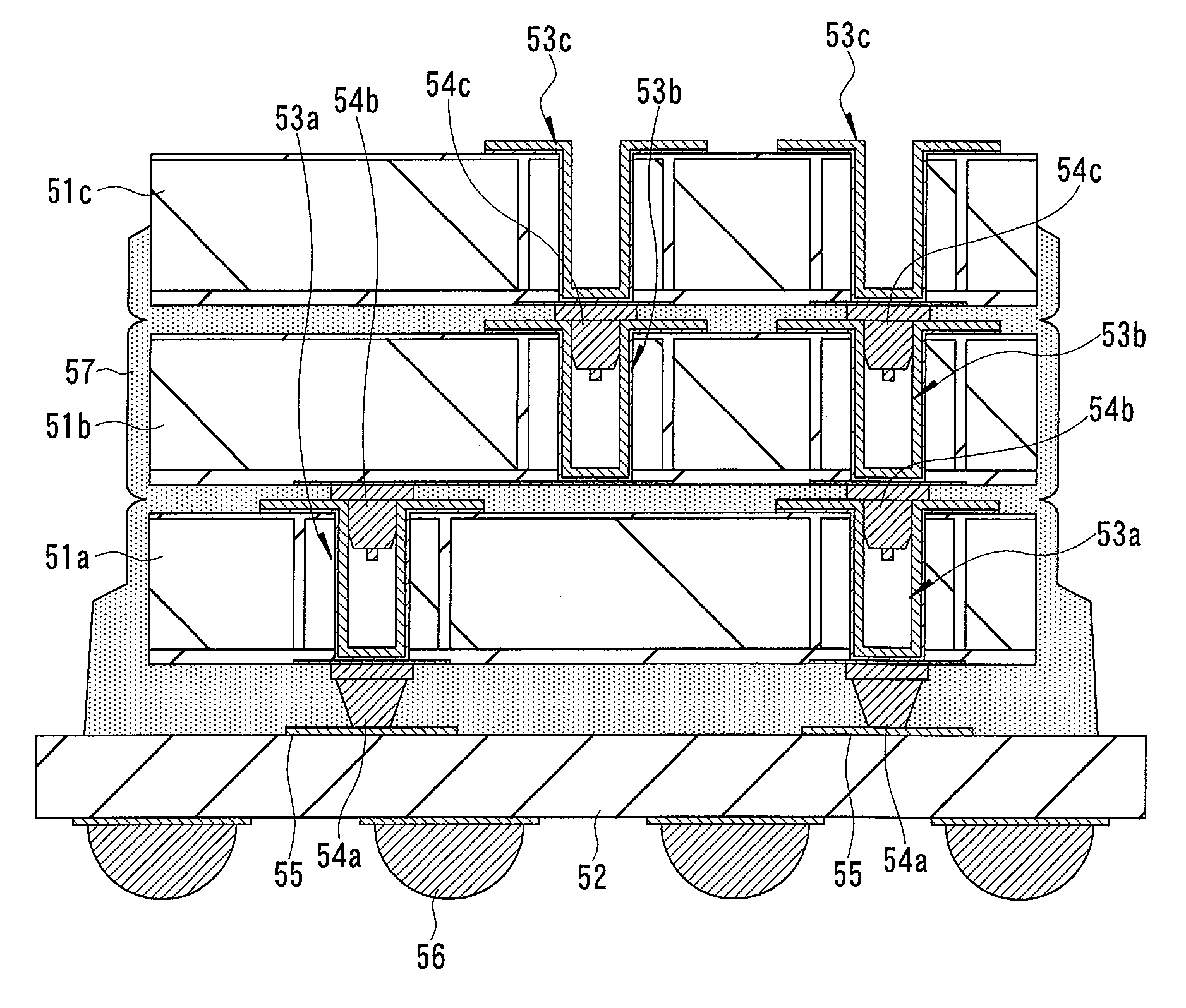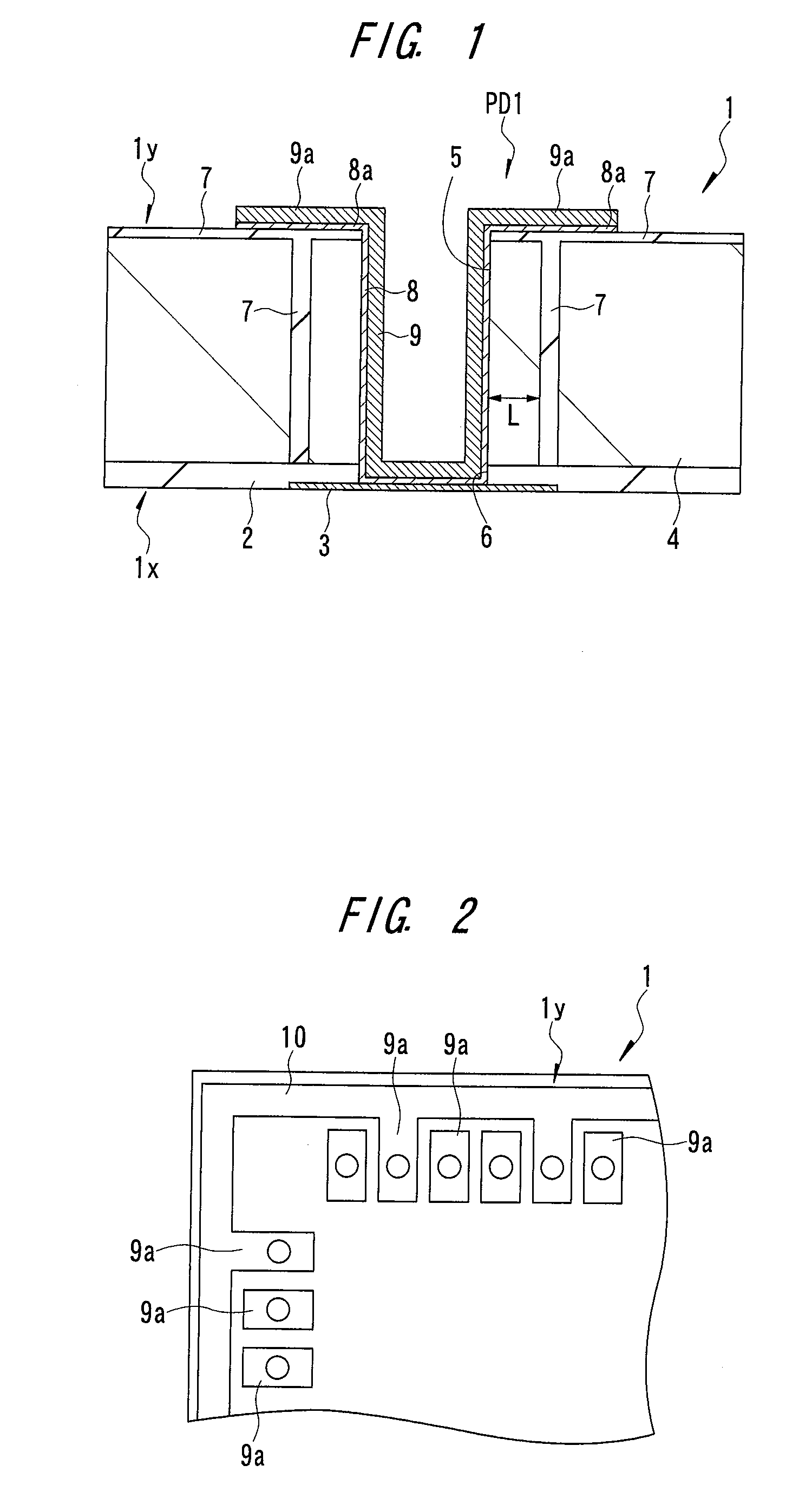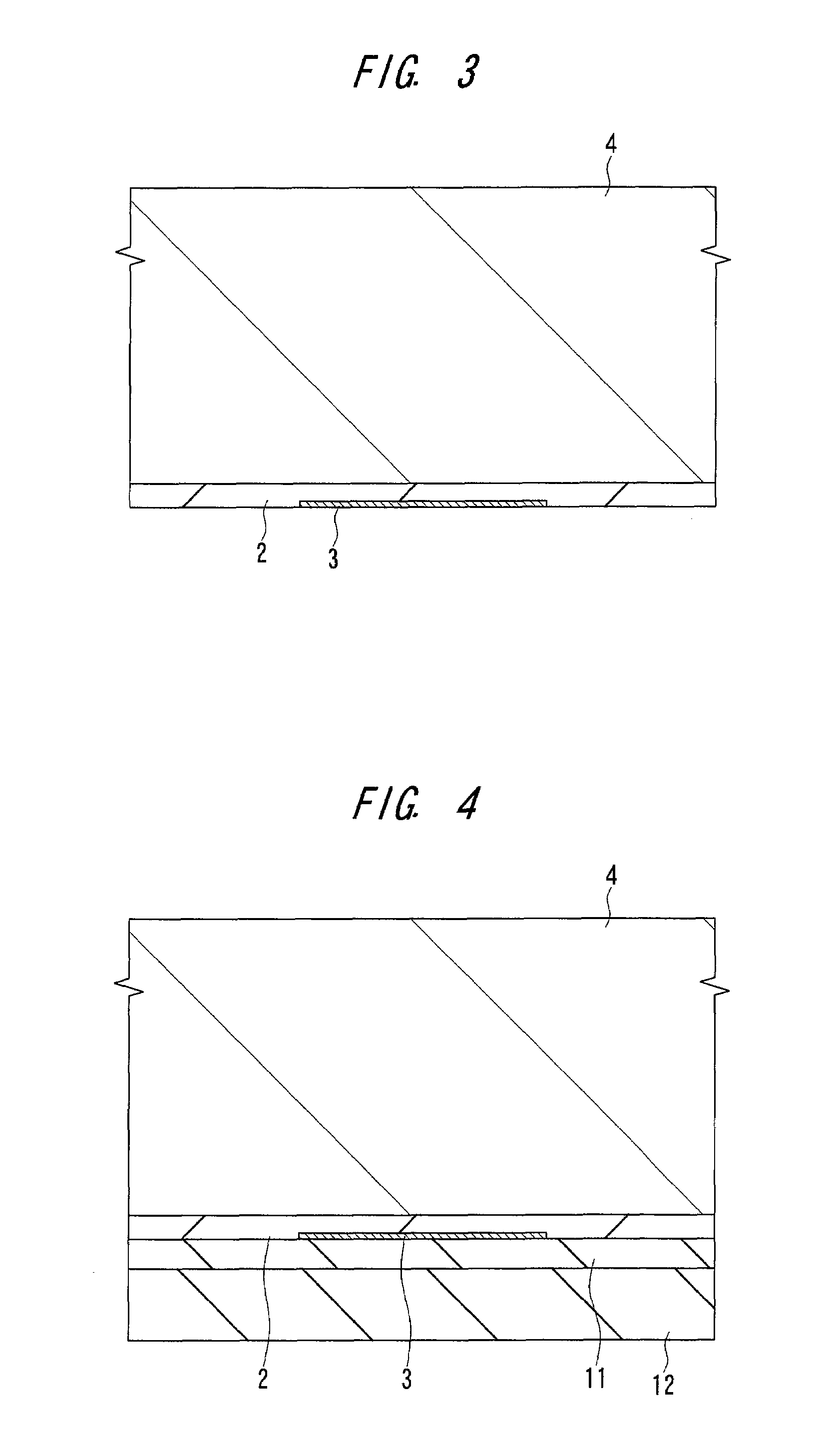Manufacturing process of semiconductor device and semiconductor device
a manufacturing process and semiconductor technology, applied in semiconductor devices, semiconductor/solid-state device details, electrical devices, etc., can solve the problems of increasing the surface temperature of the semiconductor substrate, affecting and the breakage of the semiconductor elements, so as to reduce the manufacturing cost of the semiconductor device and improve the manufacturing yield of the semiconductor devi
- Summary
- Abstract
- Description
- Claims
- Application Information
AI Technical Summary
Benefits of technology
Problems solved by technology
Method used
Image
Examples
first embodiment
[0044]A through electrode of a semiconductor device according to the first embodiment will be described with reference to FIG. 1 and FIG. 2. FIG. 1 is a cross-sectional view of the principal part of the through electrode of the semiconductor device, and FIG. 2 is a plan view of the principal part of the through electrode of the semiconductor device.
[0045]As shown in FIG. 1, a through electrode PD1 includes a first electrode (element surface electrode 3) formed on a first surface 1x side of a semiconductor wafer 1, a second electrode (pad electrode 9a) formed on a second surface 1y side opposite to the first surface 1x, and a third electrode (contact electrode 9) which electrically connects the first and second electrodes and is formed so as to penetrate through a semiconductor substrate 4 as a base material of the semiconductor wafer 1.
[0046]A semiconductor element (not shown) and a surface protection insulating film (first insulating film) 2 covering the semiconductor element are f...
second embodiment
[0067]A through electrode of a semiconductor device according to the second embodiment will be described with reference to FIG. 18. FIG. 18 is a cross-sectional view of the principal part of the through electrode of the semiconductor device.
[0068]The difference from the above-described first embodiment is that the element surface electrode 3 formed on the first surface 1x side of the semiconductor wafer and the contact electrode 9 formed in the semiconductor substrate 4 are electrically connected via a plurality of contact plugs 22. More specifically, in the through electrode PD1 according to the first embodiment described above, the element surface electrodes 3 formed on the first surface 1x side of the semiconductor wafer and the contact electrode 9 formed in the semiconductor substrate 4 are directly connected by forming the opening 6 having the same diameter as the through hole 5 in the surface protection insulating film 2. In the through electrode PD2 according to the second em...
third embodiment
[0070]A through electrode of a semiconductor device according to the third embodiment will be described with reference to FIG. 19. FIG. 19 is a cross-sectional view of the principal part of the through electrode of the semiconductor device.
[0071]The difference from the above-described first embodiment is that the element surface electrode 3 formed on the first surface 1x side of the semiconductor wafer and the contact electrode 9 formed in the semiconductor substrate 4 are electrically connected via a plurality of contact plugs 22 and an inner electrode (fourth electrode) 23. More specifically, in the through electrode PD1 according to the first embodiment described above, the element surface electrode 3 formed on the first surface 1x side of the semiconductor wafer and the contact electrode 9 formed in the semiconductor substrate 4 are directly connected by forming the opening 6 having the same diameter as the through hole 5 in the surface protection insulating film 2. In the throu...
PUM
 Login to View More
Login to View More Abstract
Description
Claims
Application Information
 Login to View More
Login to View More - Generate Ideas
- Intellectual Property
- Life Sciences
- Materials
- Tech Scout
- Unparalleled Data Quality
- Higher Quality Content
- 60% Fewer Hallucinations
Browse by: Latest US Patents, China's latest patents, Technical Efficacy Thesaurus, Application Domain, Technology Topic, Popular Technical Reports.
© 2025 PatSnap. All rights reserved.Legal|Privacy policy|Modern Slavery Act Transparency Statement|Sitemap|About US| Contact US: help@patsnap.com



